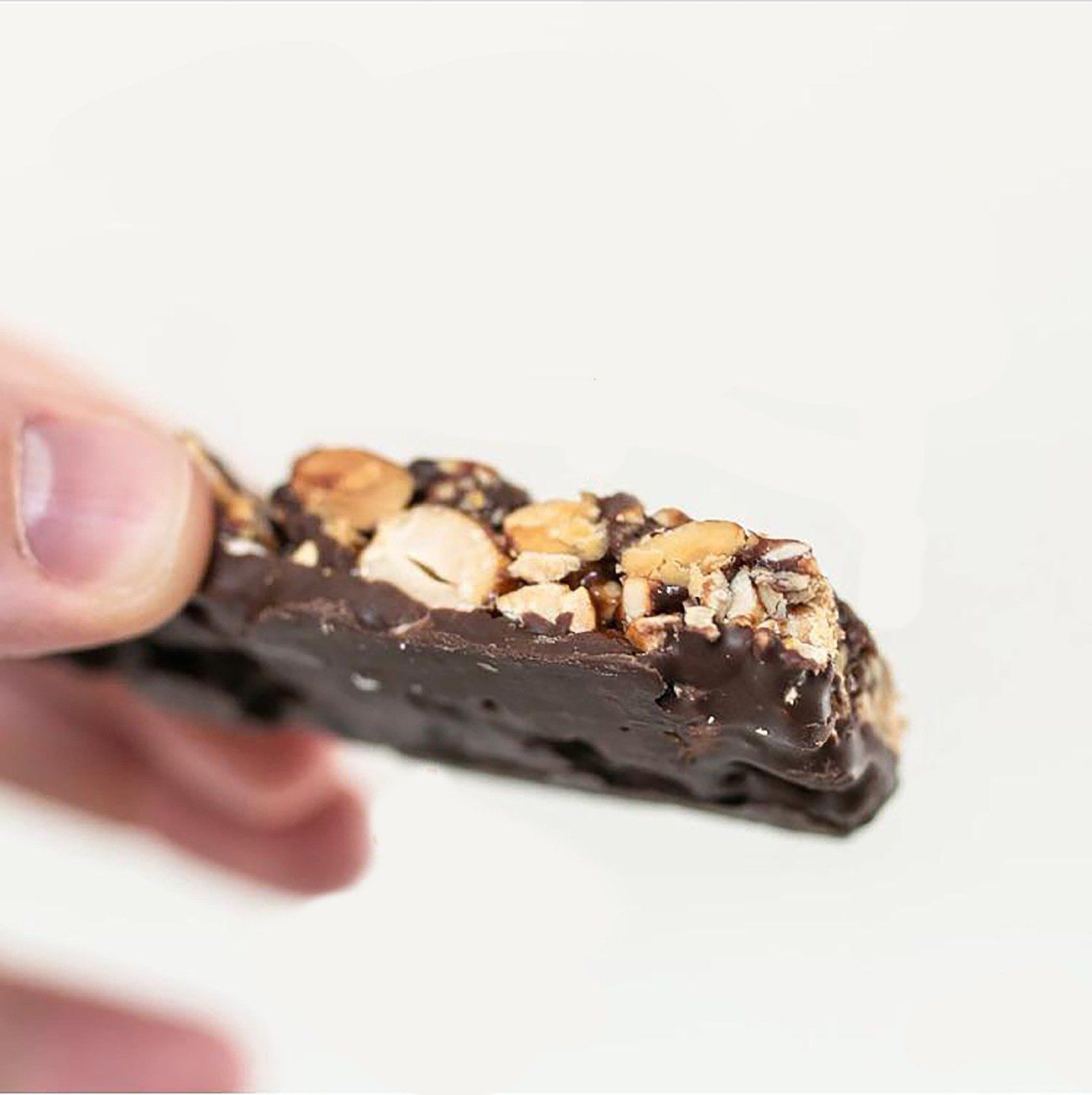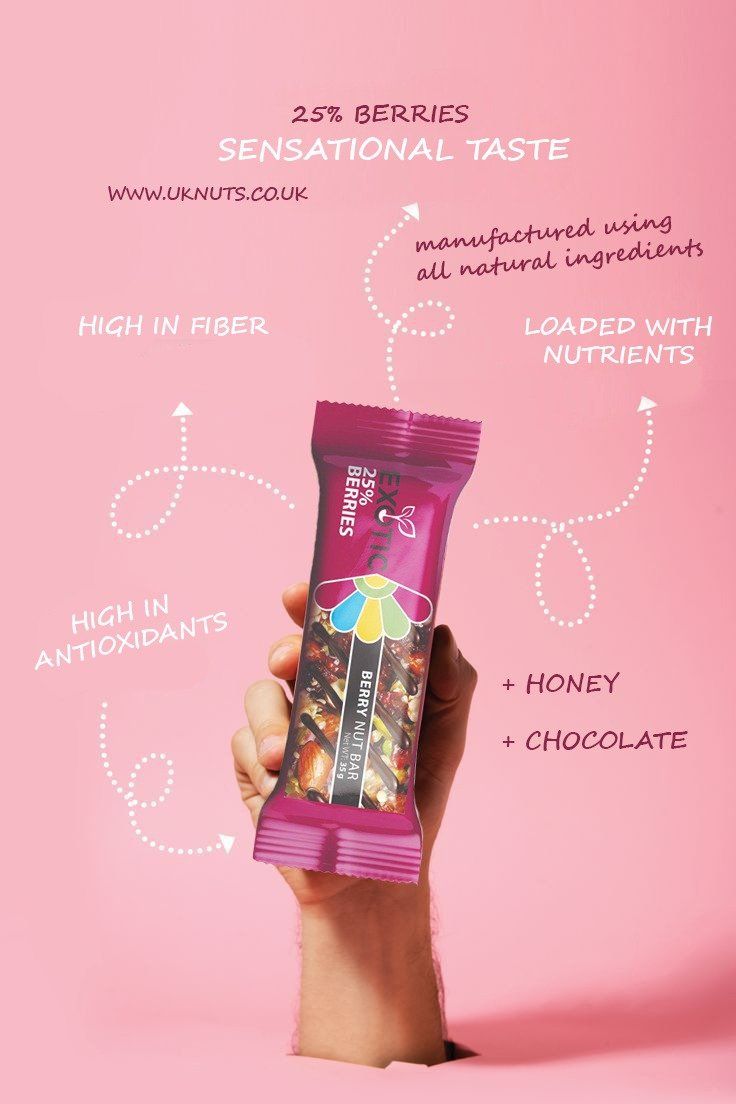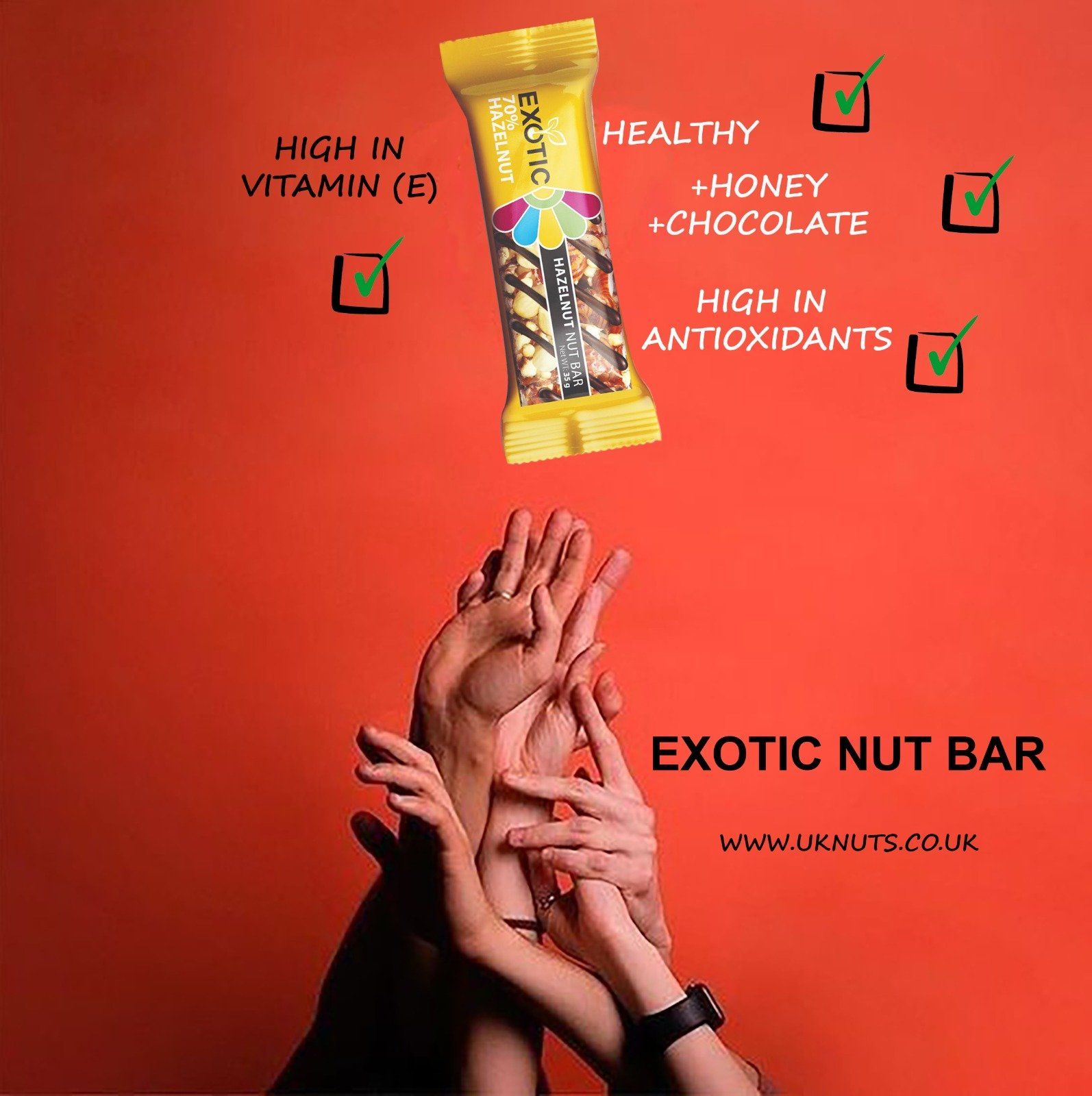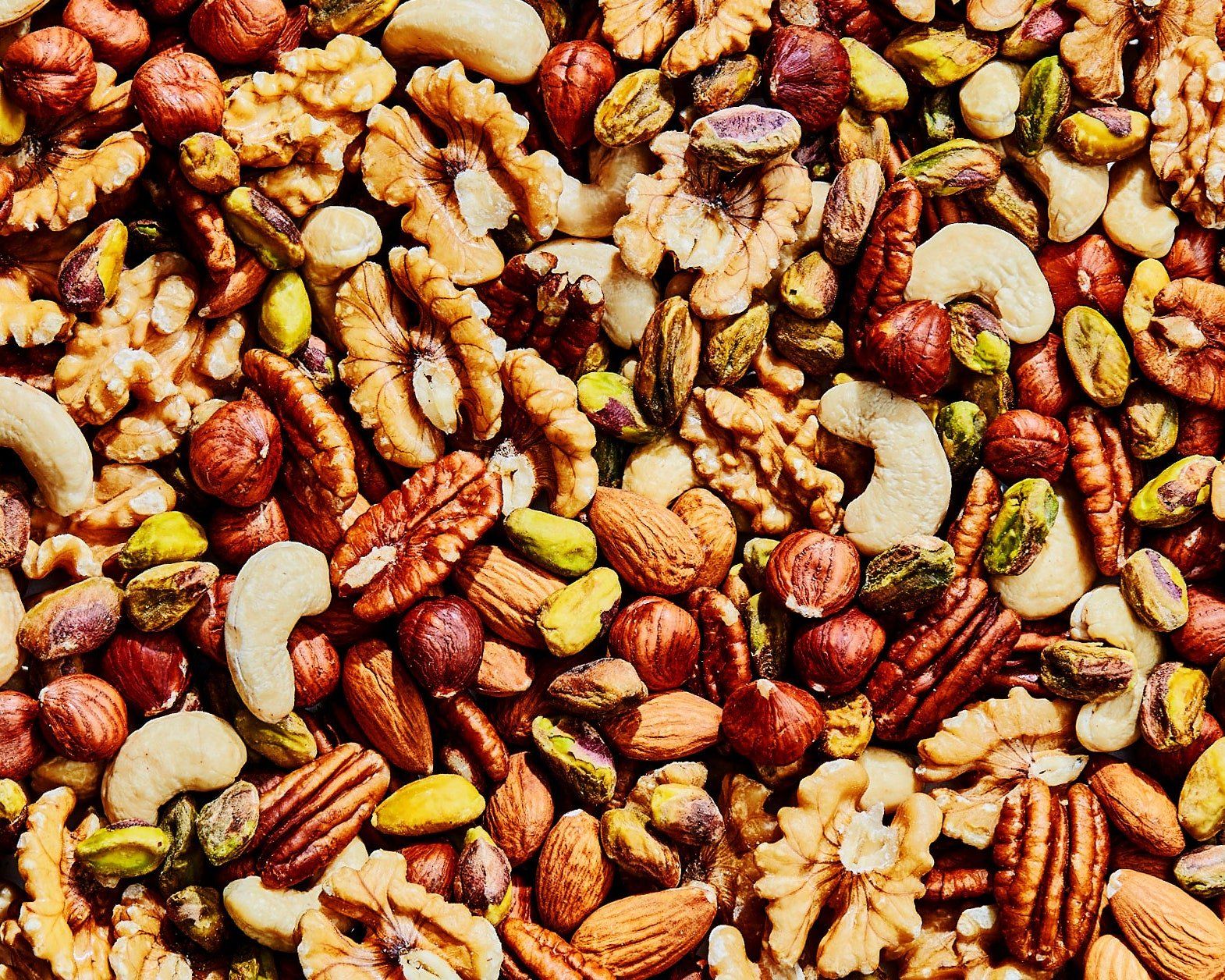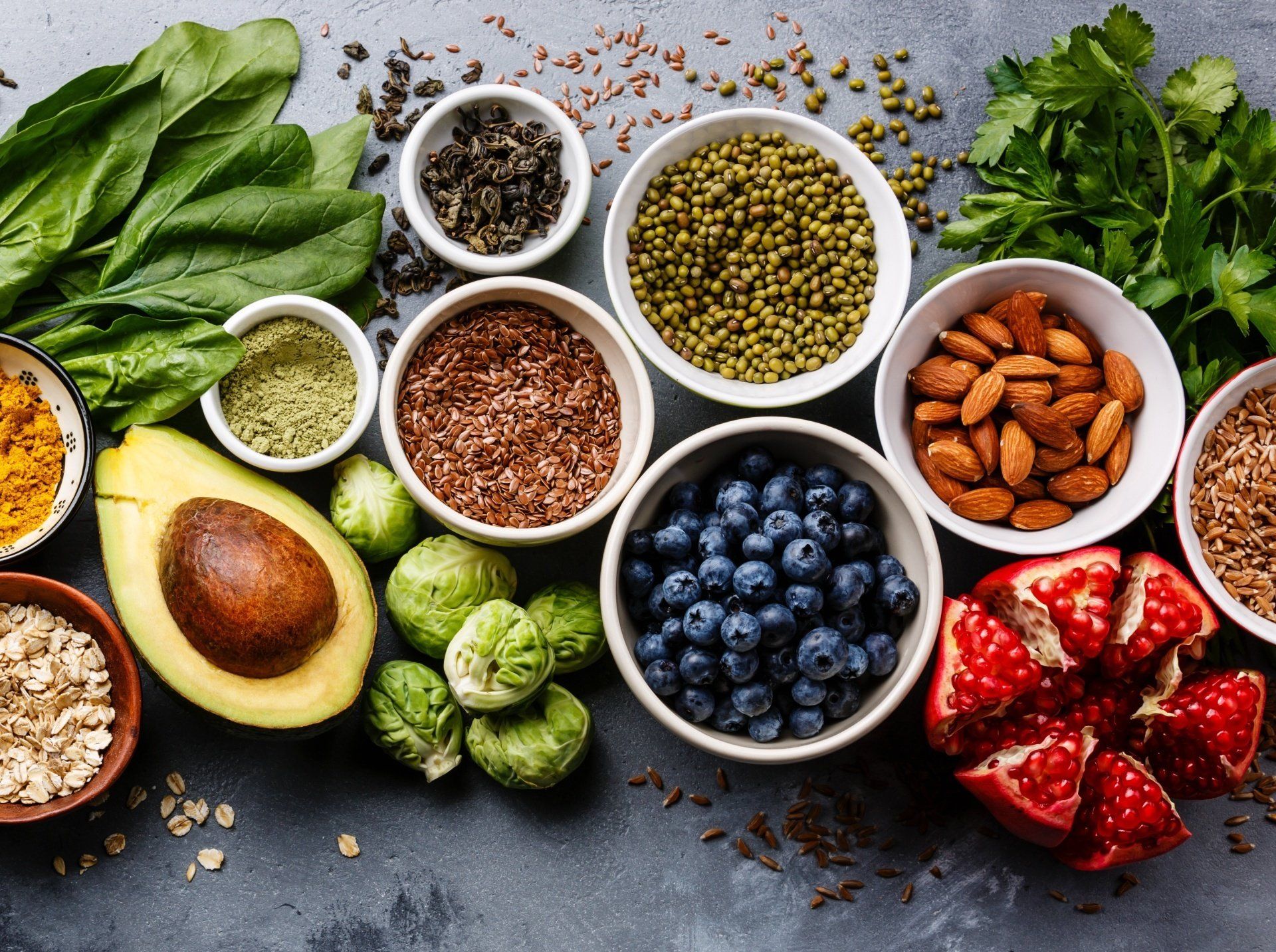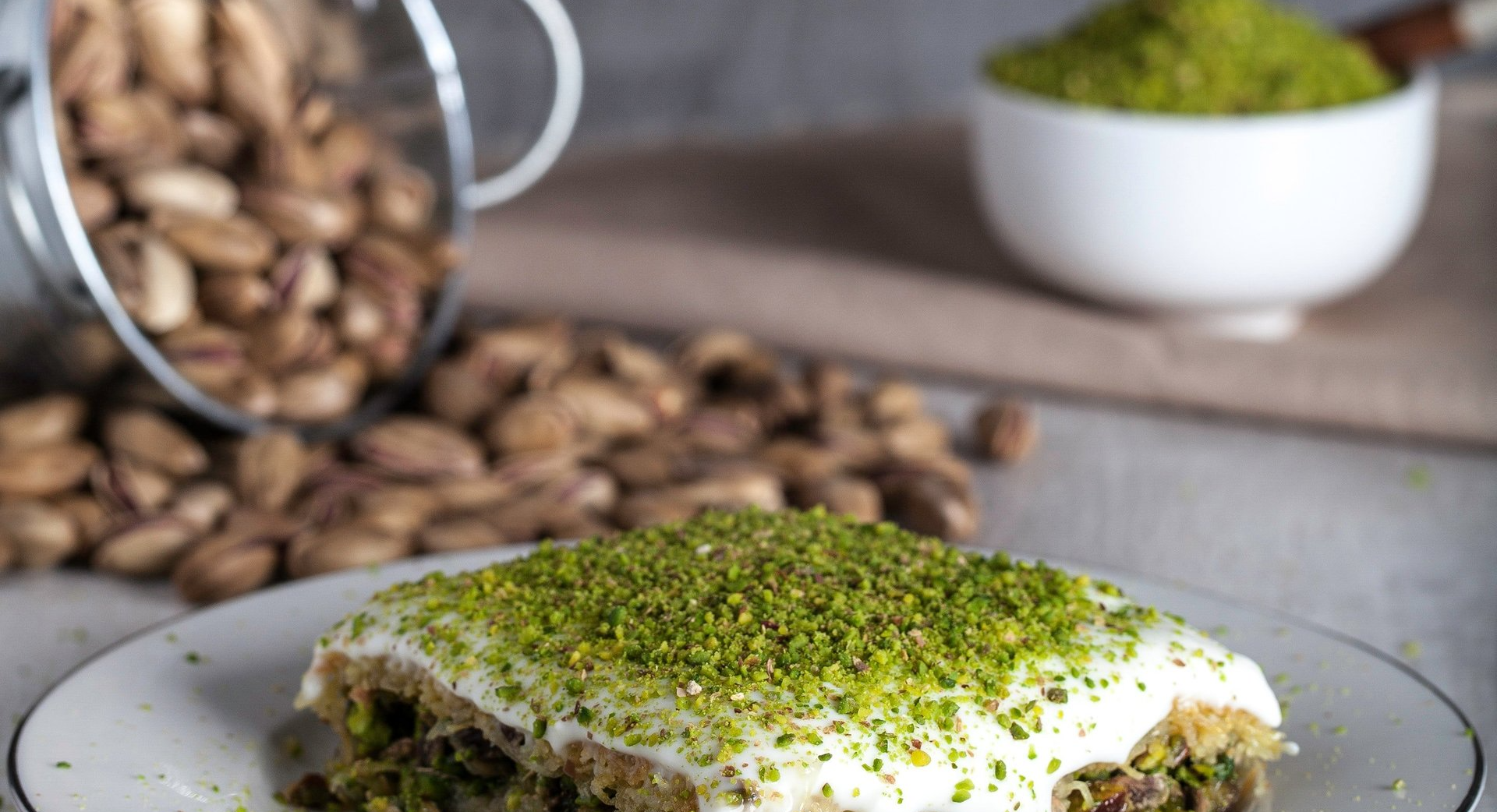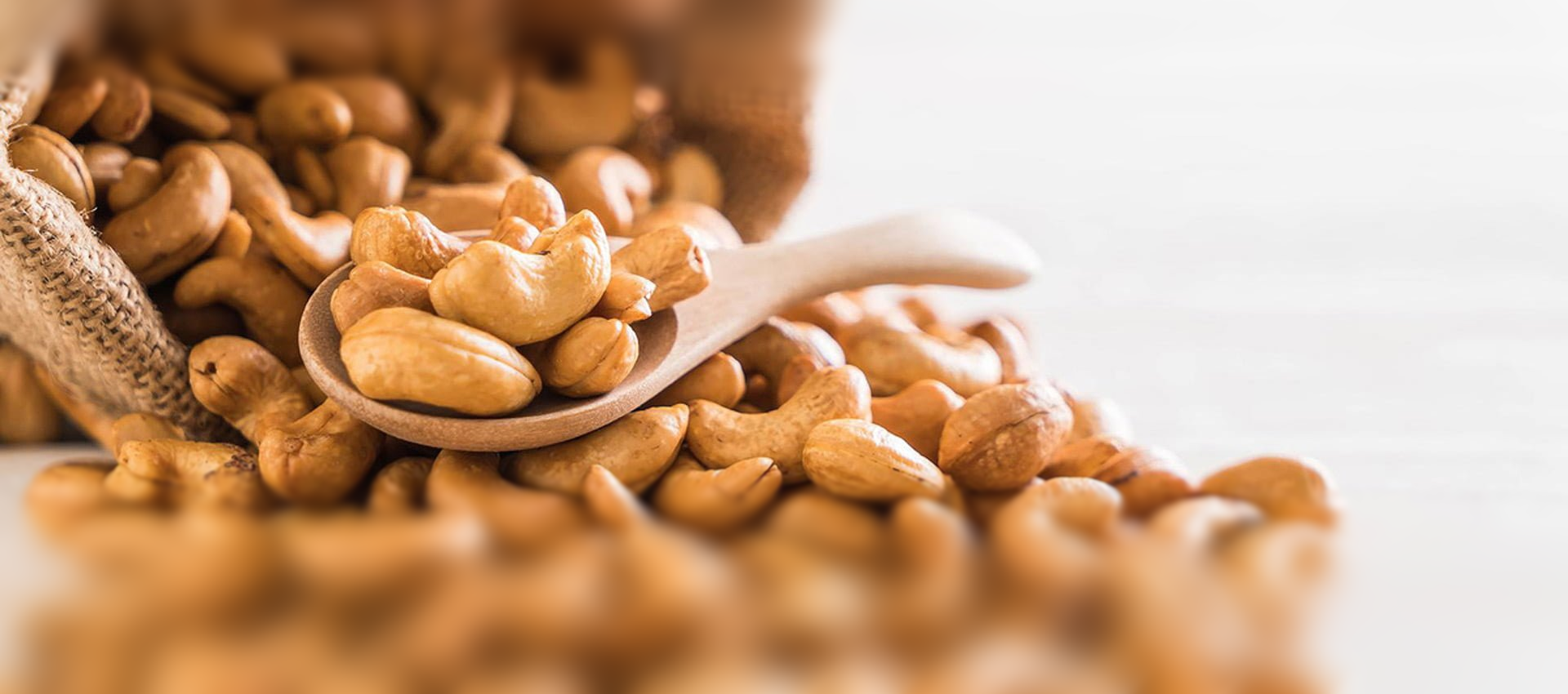Nutrition attributes and health effects of pistachio nuts
This article is presented by the University of Cambridge.
- Abstract
Epidemiological and/or clinical trials have suggested that nut consumption has a beneficial impact on health outcomes such as hypertension, diabetes, CVD, cancer, other inflammatory conditions and total mortality. Nuts are nutrient-dense foods with a healthy fatty acid profile, as well as provide other bioactive compounds with recognised health benefits. Among nuts, pistachios have a lower fat and energy content and the highest levels of K, γ-tocopherol, vitamin K, phytosterols, xanthophyll carotenoids, certain minerals (Cu, Fe and Mg), vitamin B6 and thiamin. Pistachios have a high antioxidant and anti-inflammatory potential. The aforementioned characteristics and nutrient mix probably contribute to the growing body of evidence that consumption of pistachios improves health. The present review examines the potential health effects of nutrients and phytochemicals in pistachios, as well as epidemiological and clinical evidence supporting these health benefits.
The health benefits of nuts, mainly in relation to CVD as well as to other chronic conditions, have been widely demonstrated in both epidemiological(1) and clinical(2, 3) trials. For this reason, the American Heart Association(4, 5), the Canadian Cardiovascular Society(6) and the US Food and Drug Administration(7) recommend the regular consumption of nuts to the general population, in the context of a healthy diet, to prevent the risk of CVD. Recently, nut consumption has also been inversely associated with total mortality(8, 9). Nuts are the rich sources of unsaturated fatty acids, fibre and protein, along with many vitamins (vitamins E and B6, niacin or folic acid), minerals (Mg, K and Cu) and other phytochemical constituents (stigmasterol, campesterol, resveratrol and catechins)(10). Compared with other nuts, pistachios have a lower fat (mostly from PUFA and MUFA) and energy content, and higher levels of fibre (both soluble and insoluble), K, phytosterols, γ-tocopherol, vitamin K, and xanthophyll carotenoids(10) (Table 1). Pistachios are among the top fifty foods with a high antioxidant potential(11). In addition, pistachios are the only nut that contains significant amounts of lutein and zeaxanthin(10). Polyphenols, xanthophylls and tocopherols from pistachios have been demonstrated to be rapidly accessible in the stomach, thus maximising the possibility of absorption in the upper small intestine, thereby contributing to the beneficial relationship between pistachio consumption and health-related outcomes(12).
Table 1. Macronutrient contents of the selected nuts per 100g (raw and dry roasted)*
* US Department of Agriculture, Nutrient Database for Standard Reference, Release 26, 2013(10).
The present review examines the potential health effects of compounds in pistachios as well as epidemiological and clinical evidence supporting the health benefits of pistachio consumption.
- Bioactive components of pistachios
Nuts and diet quality
Recent epidemiological studies conducted in children and adults have demonstrated a significant association between nut consumption and a higher diet quality score or improved nutrient intakes(13, 14). O'Neil et al. (13), in a study of 13 292 adults participating in the 1999–2004 National Health and Nutrition Examination Survey, observed that tree nut consumers, defined as those consuming more than 7·09 g/d of nuts or tree nut butters, had a significantly higher intake of several nutrients as fibre, vitamins and minerals, and also a higher Total Healthy Eating Index-2005 score. Similarly, in an analysis including concatenated data from adults aged 2+ years participating in the National Health and Nutrition Examination Survey 1999–2000, 2001–02 and 2003–04, consumption of more than 7·08 g/d was associated with a healthier nutrient profile and higher Total Healthy Eating Index-2005 score in consumers of all age groups. Moreover, adult consumers showed a better metabolic risk profile(14). Furthermore, the results of a clinical trial conducted on 124 obese subjects demonstrated that nutritional dietary quality among nut consumers (those eating 42 g hazelnuts/d for 12 weeks) was appreciably improved compared with other groups consuming chocolate, potato crisps or no additional foods(15). Finally, the inclusion of nuts in energy-restricted diets reduced attrition and increased weight loss, supporting that nuts enhance palatability and compliance with diets without compromising beneficial health effects(16).
Fat content
Pistachios, compared with other nuts, are relatively low in fat, containing 45·4 g total fat per 100 g pistachio kernel and consisting of 5·6 g SFA, 13·7 g PUFA and 23·8 g MUFA (Table 1)(10). Within fatty acids, oleic and linoleic fatty acids, both recognised for their cardiovascular-preventive properties(17), represent more than 60 % of the total fat content in pistachios.
The USA (California, Arizona and New Mexico), Iran and Turkey are the largest producers of pistachios, growing varieties that differ slightly in nutritional composition. Whereas US pistachios have less energy and contain higher amounts of lutein and zeaxanthin, Iranian pistachios are richer in linoleic acid(18) and Turkish pistachios in Ca(19) (Table 2). Fatty acid composition and nutritional profile characteristics also depend on the climate in which the pistachios are grown. For example, cultivars of pistachio nuts grown in hot temperatures (over 25°C) tend to produce a lower amount of a saturated fat such as palmitic acid(20).
Table 2.
Comparison of nutrient contents of pistachio seeds by country of origin
% DV, % daily value.
* US Department of Agriculture National Nutrient Database for Standard Reference, Release 26, 2013(10).
† Covance Certificate of Analysis(18).
‡ Covance Certificate of Analysis(19).
Protein
Pistachios are a good source of vegetable protein, which comprises about 20 % of total weight, with approximately 2 % l-arginine(21). This amino acid, also present in other nuts, is a precursor to the endogenous vasodilator NO, an important molecule involved in the cardiovascular system as a key regulator of vascular tone and in numerous pathological conditions such as hypertension, CVD and neurodegenerative disorders due to its pro-oxidant capacity(22, 23). NO synthase inhibitors based on arginine have been of special interest for experimental as well as clinical applications(24). Therefore, pistachios could play an important protective role in NO synthase-related diseases. On a per serving basis (28·35 g), pistachios provide 10·6 % US RDA of adult men and 12·9 % of adult women(25). Compared with the FAO- and WHO-recommended essential amino acid pattern for an adult, pistachios contain adequate amounts of all of the essential amino acids(26). Pistachios have an essential amino acid ratio (essential amino acid:total amino acid) of 39·1, higher than most of all the commonly consumed nuts (almonds, walnuts, pecans and hazelnuts). Pistachios also provide a high percentage of branched-chain amino acids (1·599 g leucine, 0·932 g isoleucine and 1·262 g valine per 100 g), higher than other tree nuts.
Carbohydrates and fibre
The amount of carbohydrate in pistachios, as in other nuts, is low to moderate (about 27·5 % by weight), but pistachios are rich in fibre, containing 10 % by weight of insoluble forms and 0·3 % of soluble forms. Pistachios provide 3 g or 12 % of RDA per serving basis (Table 1)(10). According to the US Department of Agriculture food composition tables, of all nuts, only almonds have similar amounts of fibre, with 13 % of weight. Fibre content is important because epidemiological and clinical studies have consistently demonstrated that fibre intake is inversely associated with weight gain(27), diabetes(28), CVD(29) and some types of cancer(28). Moreover, pistachios have a low glycaemic index, which contributes to maintaining satiety longer and lowering postprandial blood glucose concentrations(30, 31).
Vitamins and minerals
Pistachios are rich in Cu, Mg, Mn, vitamin A, vitamin C and B vitamins, with the exception of vitamin B12 (cyanocobalamin)(32), compared with other nuts (Table 3). In particular, pistachios contain relatively high amounts of thiamin (vitamin B1), which is involved in intermediary carbohydrate metabolism, with 0·87 mg/100 g of pistachios (providing up to 50 % of the RDA). The amount of pyridoxine (vitamin B6) that is involved in the metabolism of amino acids and in the production of niacin is about 1·7 mg/100 g of pistachios, exceeding the RDA. Finally, the amount of folic acid in pistachios provides approximately 25 % of the RDA. Folic acid is necessary for the formation of structural proteins and Hb, and deficiency leads to an increase in the risk of CVD(33). Among nuts, pistachios also stand out for high vitamin K content, with approximately 13·2 μg/100 g (16 % of the RDA; Table 3). Beyond its role in bone metabolism(34-36), a higher dietary intake of vitamin K has been associated with a lower risk of several chronic diseases such as type 2 diabetes (T2DM)(34), cancer(37, 38) and CVD(38), thus expanding the potential health benefits of pistachio consumption. The beneficial role of pistachios in inflammatory-related diseases may also be explained by the relatively high amount of γ-tocopherol they contain(39).
Table 3.
Micronutrient contents of the selected nuts per 100g (raw and dry roasted)*
* US Department of Agriculture, Nutrient Database for Standard Reference, Release 26, 2013(10). Polyphenol data were obtained from the Phenol-Explorer database (http://www.phenol-explorer.eu)(32).
Pistachios are rich in several minerals such as K, Mg, Ca, Cu and Mn. Because of their mineral profile, pistachios could play a beneficial role in blood pressure (BP) regulation or in bone-related diseases. Pistachios also contain significant amounts of Zn and Se, both minerals with recognised antioxidant effects that are involved in the prevention of CVD and some types of cancer(40, 41).
Phenol content
Pistachios, pecans and walnuts are rich sources of phenolic compounds, including anthocyanins, flavonoids, proanthocyanidins, flavonols, isoflavones, flavanones, stilbenes, phenolic acids and hydrolysable tannins, which are important as antioxidants and also for their chemopreventive, cardioprotective and vasoprotective properties(42, 43). Phenolic compounds may have protective effects against diseases related to free radical overproduction, such as CVD and cancer. A randomised, double-blinded, cross-over study with placebo v. a supplement of 640 mg anthocyanins daily during 4 weeks in pre-hypertensive men showed a significant increase in HDL-cholesterol (HDL-C) levels and also blood glucose levels after anthocyanin v. placebo treatment(44). Furthermore, the hydrophilic extract from pistachios, which has high antioxidant activity, increases the resistance of human LDL-cholesterol (LDL-C) from healthy subjects to Cu-induced oxidation after 2 h of incubation(45).
According to Tomaino et al. (46), all phenolic groups found in pistachios, and in other nuts, are present in higher amounts in the skins than in the seeds. Pistacia vera L. (variety Bronte) skins contain cyanidin-3-O-galactoside (5865 mg/g), gallic acid (1453 mg/g), catechin (377 mg/g) and eriodictyol-7-O-rutinoside (366 mg/g). Pistachio kernels contain quercetin-3-O-rutinoside (98·1 mg/g), genistein (69·1 mg/g), genistein-7-O-glucoside (47·0 mg/g) and daidzein (42·4 mg/g). Therefore, the final content of total flavonoids in the skins is 70·27 (sd 5·42) mg of catechin equivalents/g of fresh weight, whereas in the seeds, it is only 0·46 (sd 0·03) mg of catechin equivalents/g of fresh weight(46). Pistachios are the only nut containing anthocyanins, phenolic compounds, in the skin. These phenolic compounds are known to bind metals through binding with o-diphenol groups, which is important in the inhibition of metal-induced lipid oxidation(47). Nonetheless, in a simulated human digestion model, more than 90 % of the pistachio polyphenols were released to the gastric compartment without differences between raw or roasted pistachios(12, 48).
Carotenoids
Lutein and zeaxanthin are two xanthophyll carotenoids responsible for giving colour to pistachio nuts. Raw pistachios contain 1405 μg lutein+zeaxanthin/100 g, about thirteen times more than the next highest nut type, hazelnuts, which contain only 92 μg (Table 3). The bioavailability of carotenoids depends on the source and interaction with other dietary components. Van Het Hof et al. (49) demonstrated that the interaction of β-carotene and lycopene with the lipid matrix increases the bioavailability of carotenoids. Notably, almost 100 % of the bioaccessibility of lutein was found after in vitro duodenal digestion(12). Carotenoids have antioxidant properties and have been associated with a reduced risk of CVD and some types of cancer(49). Moreover, lutein and zeaxanthin are concentrated in the retina where they thought to function as antioxidants and/or as a blue light filter, to protect the underlying tissues from phototoxic damage(50). This has been proposed as an important factor in the pathophysiology of age-related macular degeneration(51).
Total phytosterols
Among nuts, pistachios have the highest phytosterol content, with 214 mg/100 g, including stigmasterol, campesterol and β-sitosterol. Phytosterols, structurally similar to cholesterol, have the same basic cyclopentanoperhydrophenanthrene ring structure but differ in the side chain at C24 and/or the position and configuration of unsaturated double bonds and the optical rotation at chiral carbons. Several studies have demonstrated a dose–response reduction of cholesterol mediated by phytosterols, even at lower levels similar to those found in plant-based diets with pistachios(52). Although 500 mg of phytosterols per serving are needed to support the Food and Drug Administration (FDA) health claim, the levels of phytosterols in pistachio nuts may be sufficient to play a synergistic role with unsaturated fatty acids and the low SFA levels in helping to maintain normal cholesterol levels.
- Effects of processing and storage on the final level of bioactive compounds
Roasting and steam roasting
Roasting and steam roasting are a common method of processing pistachios to increase the overall safety and palatability and enhance the flavour, colour, texture and appearance of the nuts(48). However, this process may alter the bioactive compounds in pistachios(46). In this sense, it was demonstrated that the antioxidant capacity and total phenol content were reduced by 60 % in the same lot of Bronte's pistachio nuts, before and after exposure at 160°C for 40 min. Proanthocyanidin content was reduced by about 90 % and loss of vitamin C was observed, whereas isoflavones were not modified(45). Other antioxidants could be modified during the roasting processes as has been demonstrated in vegetables, in which, during a thermal process, the trans double bonds predominately present in carotenoids become susceptible to isomerisation, creating a cis configuration(53) and lowering the total antioxidant content(54). Lutein, however, seems to be more stable with respect to degradation compared with other types of carotenoids.
Pistachios, as well as other types of nuts, contain several protein allergens that may trigger type I hypersensitivity reactions(55). Noorbakhsh et al. (56) showed that the IgE-binding activity of pistachio nuts could be reduced by a steam-roasting process without any significant changes in the sensory quality of pistachios, due to the heat-induced denaturation of some proteins and/or reaction of these proteins to the food matrix.
Storage
Oxidation is one of the most serious problems in the storage of nuts. Oxidation causes the formation of hydroperoxides, which are colourless, tasteless and odourless. In addition, hydroperoxides increase water and soluble antioxidants by a degradation reaction of polymerised polyphenols to monomers. Fatty acid oxidation can be controlled by the application of antioxidants, using processing techniques that minimise the losses of tocopherols and other natural antioxidants; inactivate pro-oxidant metals and enzymes; reduce the exposure of nuts to oxygen, heat and light; promote hydrogenation of PUFA; and use an inert gas or vacuum packaging to expel atmospheric oxygen before long-term storage(57, 58).
Storage of nuts requires particular temperature, humidity/moisture and ventilation conditions. Bellomo et al. (59) tested the stability of lutein and oil in pistachio (P. vera L., variety Bronte) kernels stored up to 14 months at three temperatures: 10, 25 and 37°C. The samples were hermetically packaged using two films (nylon and ethylene vinyl alcohol) with and without oxygen scavengers. For each temperature, reference samples were packaged in open bags. After 14 months, the oil showed only a slight increase in acidity and peroxide value irrespective of storage temperature. As for lutein stability, the lowest concentrations were observed at 37°C with a degradation of about 57·5 %. At 10 and 25°C, the samples showed slight differences in lutein concentrations with a 37 % of degradation. Therefore, controlled storage is important for preserving pistachio quality. Oil stability is influenced only by the length of storage; lutein stability is also influenced by storage temperature and kinetic degradation. During storage, lutein showed good stability both at 10 and 25°C. In particular, a low storage temperature, such as 10°C, was the most important parameter because it guarantees good pistachio quality both for pigment and oil (acidity) stability and the absence of mould and bugs.
- In vitro and animal studies
Recent in vitro studies and studies conducted on animals have suggested that the healthy properties of pistachios can be attributed partially to the content of the nut's dietary antioxidants. Gentile et al. (60) evaluated the effects of a hydrophilic extract of P. vera L. on the production of reactive oxygen species in RAW 264.7 macrophage cells. A dose-dependent decrease in the production of Lipopolysaccharide (LPS)-induced reactive oxygen species was observed when the cells were incubated with different concentrations of hydrophilic extract, indicating proanthocyanidins as the bioactive components responsible for this effect. Similarly, the incubation of RAW 264.7 murine macrophages with a pistachio oil extract for 24 h decreased some LPS-induced inflammatory markers such as Ifit-2, TNF-α and IL-6(61). This pistachio oil extract also reduced the expression of Ifirt-2, TNF-α, IL-6 and IL-1β by 78, 55, 58 and 35 %, respectively, in response to LPS stimulation of the same cells. In two studies on rats, increased antioxidant enzymatic activity was found in animals fed pistachios for 8 weeks(62, 63). In the first study, rats were divided into three groups of twelve animals and assigned to a control group fed a standard diet and two pistachio groups fed with a standard diet containing 20 or 40 % of the energy in the form of pistachios. A significant increase in the activities of Paraoxonase 1 (PON1) and arylesterase, both markers of antioxidant capacity, was shown in both groups supplemented with pistachios compared with the control group after 10 weeks of intervention(62). In the second study, rats were assigned to a control diet (standard commercial chow); a control diet supplemented with 1·26 % of the total energy intake in the form of pistachios; a control diet with 1·63 % of cholesterol, 0·41 % of cholic acid and 16·3 % of sunflower oil (hyperlipidaemic diet); or a hyperlipidaemic diet supplemented with 1·26 % of the total energy intake in the form of pistachios. After 8 weeks, rats fed with the hyperlipidaemic diet supplemented with pistachios had higher total antioxidant activity, determined by thiobarbituric acid-reactive substances, than rats fed with the hyperlipidaemic diet alone(63). In another study, feeding 19-month-old rats with a 6 or 9 % walnut diet, which was approximately equivalent to a human eating 28 or 42 g, significantly inhibited the activation or phosphorylation of P38-Mitogen-activated protein kinase (MAPK) and the transcription factor NF-κB in brain tissues. Because both molecules are involved in the inflammatory response, these results suggest the potential attenuation of several inflammatory genes mediated by walnuts(64).
- Clinical trials in human subjects
Satiety and body-weight control
Despite the fact that nuts, including pistachios, contain a significant amount of fat and are energy-dense foods, several epidemiological studies have provided strong evidence that nut consumption is associated with neither weight gain nor an increased risk of obesity(65-67). In addition, different clinical trials evaluating the effect of nuts on body weight have been conducted, but only a few have been designed to evaluate body weight as the main outcome. One of them, a 6-month cross-over study, assessed the impact of supplementing the habitual diet with 28–56 g of walnuts per d. In this study, walnut supplementation resulted in a much lower than expected weight gain(68). Similar results were shown in a parallel, randomised, controlled trial conducted on 123 overweight and obese subjects assigned to an almond-enriched/low-energy diet (containing 56 g almonds to consume daily) or a free-nut/low-energy diet. After 6 months of follow-up, subjects in the almond-enriched diet lost slightly but significantly less weight than those in the free-nut diet, but no significant differences in body composition were observed after 18 months of follow-up(69). Most of the clinical trials that have assessed the influence of nuts on classical or emergent cardiovascular risk factors have also gathered and evaluated body-weight changes(70, 71). However, review of the available data suggests that adding nuts to habitual diets of free-living individuals does not lead to any appreciable weight gain(72-78).
In three randomised, controlled clinical trials, the effect of pistachio consumption on body weight was evaluated(31, 73, 76). In a 12-week weight-loss programme with hypoenergetic diets providing 2092 kJ less than energy recommendations, seventy overweight or obese individuals were randomly allocated to a pistachio-diet group (eating 53 g/d of pistachios) or to a pretzel-enriched diet group (eating 56 g/d of salted pretzels). The pistachios or pretzels were consumed as an afternoon snack. During the intervention, a significant reduction in BMI in the pistachio-supplemented group was observed ( − 4·3 % of the BMI). This reduction was higher than that observed in the pretzel-supplemented group ( − 2 % of the BMI)(73). Similarly, Wang et al. (76) evaluated the impact of a 12-week normoenergetic diet intervention supplemented or not with two different doses of pistachio nuts (70 or 42 g/d) on total body-weight maintenance in ninety subjects with the metabolic syndrome. The results indicated that the consumption of any dosage of pistachios resulted in no changes in BMI or waist:hip ratio compared with the group of individuals following the American Heart Association Step I recommendations. More recently, a 24-week, randomised controlled trial, including sixty metabolic syndrome subjects randomised to either the pistachio (20 % of total energy in the form of pistachio nuts daily) or control group for 6 months, failed to find significant differences in body weight. However, Gulati et al. (31) observed a significant decrease in waist circumference and a trend towards a reduction in subcutaneous adipose tissue in the pistachio group compared with the control group.
Furthermore, five randomised feeding trials evaluated the effect of pistachio consumption on body weight and/or BMI as a secondary outcome. In all five studies, participants consumed at least 15 % of the total energy intake in the form of pistachio nuts. No significant effect on body weight and/or BMI was observed compared with participants assigned to the control diet group(79-83) (Table 4).
Table 4.
Summary of cross-over, parallel and sequential intervention studies and their characteristics
M, male; F, female; RD, regular diet; PD, pistachio diet; TC, total cholesterol; HDL-C, HDL-cholesterol; LDL-C, LDL-cholesterol; VLDL-C, VLDL-cholesterol; CD, control diet; SBP, systolic blood pressure; AOP, antioxidant potential; MDA, malondialdehyde; IIEF, International Index of Erectile Function.
Several biological mechanisms may explain the unexpected null effect of nut consumption on adiposity. Nuts are rich in unsaturated fatty acids, and evidence suggests that MUFA and PUFA are more readily oxidised(84) and have a greater thermogenic effect(85) than SFA, which can lead to less fat accumulation. Several lines of evidence also demonstrate that nuts have high satiety properties. Nuts are energy dense and a good source of fibre, protein and unsaturated fats, dietary factors that increase satiety ratings. Nuts exert a strong suppression of hunger and therefore subsequent food intake is curtailed(86-88). In fact, two recent published studies have evaluated the satiating properties of pistachio nuts. The impact of consuming in-shell pistachios or pistachio kernels on fullness and energy intake was evaluated in a randomised, cross-over, controlled feeding trial including 140 university students aged 18–24 years. Consumption of in-shell pistachios resulted in a lower energy intake than consumption of kernels(89). The same authors, in a second cross-over feeding trial with 118 healthy individuals (mean age 47 (sd 10) years), demonstrated that the visual cue of the empty pistachio shells may have helped the participants to consume fewer pistachios and about 18 % less energy(90) (Table 5).
Table 5.
Summary of acute intervention studies and their characteristics
WB, white bread; SM, specific meal; PD, pistachio diet; CHO, carbohydrate; GLP-1, glucagon-like peptide 1.
The physical structure of nuts may also contribute to their satiety effect; they are crunchy and must be mechanically reduced to particles small enough for swallowing. Mastication activates mechanical, nutrient and sensory signalling systems that may modify appetitive sensations(91).
Furthermore, a small degree of fat malabsorption has been reported after nut intake, which is attributed to the fat being contained within walled cellular structures that are incompletely digested in the gut, an effect that can be compounded by incomplete mastication(92). In fact, a cross-over trial conducted on sixteen healthy volunteers consuming pistachios (42 and 84 g/d) or a free-nut diet for 3 weeks, as part of a controlled diet, demonstrated that the metabolisable energy of pistachios, calculated from differences in faecal energy excretion during the different dietary treatments, is 5 % less than the energy calculated by the Atwater general factors, suggesting that the energy from pistachios is not totally utilisable(93).
Classical markers of CVD
In a pooled analysis of twenty-five intervention trials, participants who consumed an average of 67 g/d of nuts saw a 5 % decrease in total cholesterol, a nearly 7·5 % decrease in LDL-C levels and an 8 % decrease in the LDL-C:HDL-C ratio. The effects of nut consumption were dose-related, and different types of nuts had similar effects on blood lipid levels(94). The effect of pistachio consumption on cardiovascular risk markers has been evaluated in five randomised clinical trials as a primary outcome(79-83) and in other studies as a secondary outcome(73, 76, 95), giving from 10 to 20 % of energy or from 42 to 100 g/d as pistachios v. diets avoiding the consumption of nuts (Table 4). From them, in a total of five studies, the authors found significant reductions in plasma total cholesterol concentrations in the pistachio-supplemented group(79, 80, 82, 83, 95), and in six of them, they found a significant reduction in the total cholesterol:HDL-C ratio and LDL-C:HDL-C ratio(79-83, 95). Moreover, LDL-C concentrations were decreased in the pistachio-supplemented group in three studies(82, 83, 95), whereas two studies reported no significant reductions in this recognised major cardiovascular risk factor(79, 80), although the levels decreased but not significantly in Kocyigit et al. (80). Only Wang et al. (76), in a study of Chinese subjects with the metabolic syndrome, found an increase in plasma LDL-C levels after a 12-week period of dietary intervention with a normoenergetic diet including different amounts of pistachios compared with the normoenergetic diet alone. According to Wang et al. (76), the nutrient content of the diet was underpowered to show changes in the secondary analyses of risk factors such as blood lipids. Notably, dietary intake was not controlled or reported, so it is difficult to ascertain the reason why LDL-C levels increased in the high-pistachio group. With respect to plasma HDL-C, only Sheridan et al. (81) found a significant increase in this parameter in those subjects supplemented with pistachios.
A beneficial effect of pistachios on BP has also been demonstrated recently in a randomised, cross-over, clinical trial conducted on twenty-eight dyslipidaemic individuals. Participants were randomised to three 4-week interventions: a low-fat control diet; a diet containing 10 % of the total energy content in the form of pistachios; a diet containing 20 % of the total energy as pistachios. A dose-dependent reduction in systolic BP was observed in those subjects supplemented with pistachios, and a decrease in peripheral vascular dilation was observed in those supplemented with higher doses of pistachios(96). The BP-lowering effects of pistachios have also been evaluated in three additional controlled feeding trials as a secondary outcome showing non-significant differences in the changes in systolic or diastolic BP between those subjects supplemented with pistachios and those who did not receive supplementation(76, 81, 83).
In conclusion, some evidence suggests that pistachios may improve the blood lipid profile and reduce BP, which could contribute to decreased cardiovascular risk.
Emerging risk factors of CVD
Pistachios are a rich matrix of fat-soluble antioxidants that could have important effects on the control of oxidative stress and a reduced risk of chronic diseases. In a study conducted on forty-four healthy men and women, half of the subjects were randomised to a regular diet group and the other half to a pistachio group (accounting for 20 % of their daily energy intake in the form of pistachios) for 3 weeks. The study showed an increased blood antioxidant potential determined by the production of thiobarbituric acid-reactive substances and decreased malondialdehyde levels, which is an important indicator of lipid peroxidation, in those volunteers consuming pistachios compared with those following a free-nut diet(80). A cross-over, randomised, controlled feeding trial conducted by Kay et al. (97) on twenty-eight hypercholesterolaemic adults showed that the consumption of diets containing 10 and 20 % of energy from pistachios (32–63 and 63–126 g/d, respectively) increased antioxidant concentrations in serum, such as γ-tocopherol, lutein and β-carotene, whereas it decreased oxidised LDL concentrations relative to the consumption of a control diet without pistachios. Finally, in a prospective study, Sari et al. (83) assessed the effect of a traditional Mediterranean diet supplemented with pistachios by replacing the monounsaturated fat content constituting approximately 20 % of daily energy intake on thirty-two healthy young men for 4 weeks. They found a significant improvement in endothelium-dependent vasodilation, whereas endothelium-independent vasodilation remained unchanged compared with the Mediterranean diet. An increase in total antioxidant status and superoxide dismutase and a decrease in inflammation and other oxidative markers were also observed. Taken together, these results provide evidence of the beneficial effects of pistachios on the risk of CVD beyond the lipid-lowering effect.
Insulin resistance and type 2 diabetes
Diabetes mellitus is one of the most common diseases worldwide, largely the result of an increase in the prevalence of obesity and physical inactivity. Moreover, T2DM is a recognised risk factor for CVD and other chronic conditions and diseases, and is thus becoming a serious public health burden(98, 99). Data from epidemiological and interventional studies suggest that the frequency of nut consumption is inversely related to an increased risk of T2DM, mainly attributed to the fibre, healthy fats, antioxidants and anti-inflammatory compounds(72, 100-104) in nuts. In addition, among all nuts, pistachios have a low glycaemic index, suggesting a possible effect on reducing postprandial glycaemia and insulinaemia, thereby potentially decreasing the risk of diabetes. The effect of pistachios, consumed alone or combined with meals, on postprandial glycaemia has been evaluated(30, 105) (Table 5). Thus, whereas pistachios consumed alone had a minimal effect on postprandial glycaemia, the addition of pistachios (56 g) to foods with a high glycaemic index (pasta, parboiled rice and instant mashed potatoes) reduced, in a dose-dependent manner, the total postprandial glycaemic response by 20–30 %(105). In a recent randomised, cross-over study conducted on twenty subjects with the metabolic syndrome, 85·04 g of pistachios consumed with bread reduced postprandial glycaemia levels and increased glucagon-like peptide levels compared with bread alone(30).
In three clinical studies, the effect of pistachio supplementation on glucose concentrations as a secondary outcome was evaluated, with contradictory results. In a controlled, cross-over, clinical trial, participants were randomised to a Mediterranean diet or a Mediterranean diet supplemented with 20 % of energy intake as pistachios for 4 weeks in each arm. Subjects in the intervention period showed a significant decrease in fasting plasma glucose concentrations in comparison to the control period(83). The second study evaluated the effect of the American Heart Association Step I diet supplemented with 42 or 70 g/d of pistachios compared with the effect of a control diet (American Heart Association Step I), in Chinese subjects with the metabolic syndrome using a randomised, parallel-group, controlled study design. After 12 weeks of intervention, no differences in fasting plasma glucose or insulin levels were observed between the groups, although compared with baseline values, blood glucose levels increased significantly in the control group at week 12 but not in the two pistachio groups(76). Finally, in a third parallel study conducted on sixty subjects with the metabolic syndrome randomised to either an unsalted pistachios diet (20 % energy) or a control diet for 24 weeks, a significant decrease in glucose levels but not in blood insulin levels was observed(31).
In addition to the fibre, healthy fats and low available carbohydrate content, the effect of pistachios on glucose metabolism may be a result of the rich content of carotenoids. A 9-year longitudinal study conducted on 1389 healthy elderly volunteers demonstrated a 58 % lower risk for the development of impaired fasting glucose levels or T2DM mellitus in subjects in the highest quartile of total plasma carotenoids than in those in the lowest quartile, even after adjusting for possible confounding variables(106). In a randomised controlled study, the intake of 75 g/d of mixed nuts (including pistachios) in 117 T2DM subjects during 3 months as a replacement for carbohydrate-containing foods in comparison to the intake of healthy whole-wheat muffins, or half portions of both, demonstrated for the first time a significant decrease in HbA1c levels, even though the subjects were on oral antidiabetic medication. Additionally, and despite the subjects consuming statins, an improvement in total cholesterol was observed(3).
Despite the positive results observed for glucose metabolism in fasting conditions or postprandial status, more studies are necessary to evaluate the long-term effects of pistachio consumption on insulin resistance, secretion or diabetes control.
- Summary and conclusions
Pistachios are nutrient-dense nuts with a healthy nutritional profile including fibre, healthy fats, phytosterols and antioxidant compounds, contributing to a reduced risk of heart disease. Growing evidence suggests that consumption of nuts, including pistachios, improves diet quality and provides several bioactive compounds with recognised properties for weight management, glycaemic control and vascular health.
- Acknowledgements
The authors thank Carles Munné (Rovira i Virgili University, Reus, Spain) for his help as editor assistance.
Institut d'Investigació Sanitària Pere Virgili (IISPV) received research funding from American Pistachios Growers (USA) and Paramount Farms International.
All the authors contributed equally to this work.
M. B., M. J.-F. and P. H.-A. have no conflict of interest. J. S.-S. is a non-paid member of the Scientific Advisory Council of the International Nut Council.
- References
- Sabaté, J & Ang, Y (2009) Nuts and health outcomes: new epidemiologic evidence. Am J Clin Nutr 89, 1643S–1648S.CrossRefGoogle ScholarPubMed
- Estruch, R, Ros, E, Salas-Salvadó, J, et al. (2013) Primary prevention of cardiovascular disease with a Mediterranean diet. N Engl J Med 368, 1279–1290.CrossRefGoogle ScholarPubMed
- Jenkins, DJA, Kendall, CWC, Banach, MS, et al. (2011) Nuts as a replacement for carbohydrates in the diabetic diet. Diabetes Care 34, 1706–1711.CrossRefGoogle ScholarPubMed
- Lloyd-Jones, DM, Hong, Y, Labarthe, D, et al. (2010) Defining and setting national goals for cardiovascular health promotion and disease reduction: the American Heart Association's strategic impact goal through 2020 and beyond. Circulation 586–613.CrossRefGoogle ScholarPubMed
- Stone, NJ, Robinson, JG, Lichtenstein, AH, et al. (2014) 2013 ACC/AHA guideline on the treatment of blood cholesterol to reduce atherosclerotic cardiovascular risk in adults: a report of the American College of Cardiology/American Heart Association Task Force on Practice Guidelines. Circulation 129, S1–S45.CrossRefGoogle Scholar
- Anderson, TJ, Grégoire, J, Hegele, RA, et al. (2013) 2012 update of the Canadian Cardiovascular Society guidelines for the diagnosis and treatment of dyslipidemia for the prevention of cardiovascular disease in the adult. Can J Cardiol 29, 151–167.CrossRefGoogle ScholarPubMed
- US Food and Drug Administration (2003)Qualified Health Claims: Letter of Enforcement Discretion – Nuts and Coronary Heart Disease. Rockville, MD: US Food and Drug Administration.Google Scholar
- Bao, Y, Han, J, Hu, FB, et al. (2013) Association of nut consumption with total and cause-specific mortality. N Engl J Med 369, 2001–2011.CrossRefGoogle ScholarPubMed
- Guasch-Ferré, M, Bulló, M, Martínez-González, M, et al. (2013) Frequency of nut consumption and mortality risk in the PREDIMED nutrition intervention trial. BMC Med 11, 164.CrossRefGoogle ScholarPubMed
- U.S. Department of Agriculture ARS (2013) USDA National Nutrient Database for Standard Reference, Release 26. Nutrient Data Laboratory Home Page. United States Department of Agriculture. http://www.ars.usda.gov/ba/bhnrc/ndl.Google Scholar
- Halvorsen, BL, Carlsen, MH, Phillips, KM, et al. (2006) Content of redox-active compounds (i.e. antioxidants) in foods consumed in the United States. Am J Clin Nutr 84, 95–135.CrossRefGoogle Scholar
- Mandalari, G, Bisignano, C, Filocamo, A, et al. (2013) Bioaccessibility of pistachio polyphenols, xanthophylls, and tocopherols during simulated human digestion. Nutrition 29, 338–344.CrossRefGoogle ScholarPubMed
- O'Neil, CE, Keast, DR, Fulgoni, VL, et al. (2010) Tree nut consumption improves nutrient intake and diet quality in US adults: an analysis of National Health and Nutrition Examination Survey (NHANES) 1999–2004. Asia Pac J Clin Nutr 19, 142–150.Google ScholarPubMed
- O'Neil, CE, Keast, DR, Nicklas, TA, et al. (2012) Out-of-hand nut consumption is associated with improved nutrient intake and health risk markers in US children and adults: National Health and Nutrition Examination Survey 1999–2004. Nutr Res 32, 185–194.CrossRefGoogle ScholarPubMed
- Tey, SL, Brown, R, Gray, A, et al. (2011) Nuts improve diet quality compared to other energy-dense snacks while maintaining body weight. J Nutr Metab 2011, 357350.CrossRefGoogle ScholarPubMed
- McManus, K, Antinoro, L & Sacks, F (2001) A randomized controlled trial of a moderate-fat, low-energy diet compared with a low fat, low-energy diet for weight loss in overweight adults. Int J Obes Relat Metab Disord 25, 1503–1511.CrossRefGoogle ScholarPubMed
- Gillingham, LG, Harris-Janz, S & Jones, PJH (2011) Dietary monounsaturated fatty acids are protective against metabolic syndrome and cardiovascular disease risk factors. Lipids 46, 209–228.CrossRefGoogle ScholarPubMed
- Covance Certificate of Analysis, Report # 709901-0. Iran (accessed 15 January 2013).Google Scholar
- Covance Certificate of Analysis, Report # 710331-0. Turkey (accessed 16 January 2013).Google Scholar
- Satil, F, Azcan, N & Baser, KHC (2003) Fatty acid composition of pistachio nuts in Turkey. Chem Nat Compd 39, 322–324.CrossRefGoogle Scholar
- Ros, E (2009) Nuts and novel biomarkers of cardiovascular disease. Am J Clin Nutr 89, 1649S–1656S.CrossRefGoogle ScholarPubMed
- Loscalzo, J & Welch, G (1995) Nitric oxide and its role in the cardiovascular system. Prog Cardiovasc Dis 38, 87–104.CrossRefGoogle ScholarPubMed
- Jaffrey, SR & Snyder, SH (1995) Nitric oxide: a neural messenger. Annu Rev Cell Dev Biol 11, 417–440.CrossRefGoogle ScholarPubMed
- Víteček, J, Lojek, A, Valacchi, G, et al. (2012) Arginine-based inhibitors of nitric oxide synthase: therapeutic potential and challenges. Mediators Inflamm 2012, 318087.CrossRefGoogle ScholarPubMed
- Institute of Medicine (2005) Dietary Reference Intakes for Energy, Carbohydrate, Fiber, Fat, Fatty Acids, Cholesterol, Protein, and Amino Acids (Macronutrients). Washington, DC: The National Academies Press.Google Scholar
- Sathe, SK, Monaghan, EK, Kshiesagar, HH, et al. (2008) Chemical composition of edible nut seeds and its implications in human health. In Tree Nuts Composition, Phytochemicals and Health Effects, pp. 12–29 [Alsalvar, C and Shahidi, F, editors]. Florida, USA: Taylor & Francis Group.Google Scholar
- Ye, EQ, Chacko, SA, Chou, EL, et al. (2012) Greater whole-grain intake is associated with lower risk of type 2 diabetes, cardiovascular disease, and weight gain. J Nutr 142, 1304–1313.CrossRefGoogle ScholarPubMed
- Kaczmarczyk, MM, Miller, MJ & Freund, GG (2012) The health benefits of dietary fiber: beyond the usual suspects of type 2 diabetes mellitus, cardiovascular disease and colon cancer. Metabolism 61, 1058–1066.CrossRefGoogle ScholarPubMed
- Anderson, JW, Hanna, TJ, Peng, X, et al. (2000) Whole grain foods and heart disease risk. J Am Coll Nutr 19, 291S–299S.CrossRefGoogle ScholarPubMed
- Kendall, CWC, West, SG, Augustin, LS, et al. (2014) Acute effects of pistachio consumption on glucose and insulin, satiety hormones and endothelial function in the metabolic syndrome. Eur J Clin Nutr 68, 370–375.CrossRefGoogle ScholarPubMed
- Gulati, S, Misra, A, Pandey, RM, et al. (2014) Effects of pistachio nuts on body composition, metabolic, inflammatory and oxidative stress parameters in Asian Indians with metabolic syndrome: a 24-wk, randomized control trial. Nutrition 30, 192–197.CrossRefGoogle ScholarPubMed
- Rothwell, JA, Urpi-Sarda, M, Boto-Ordoñez, M, et al. (2012) Phenol-Explorer 2·0: a major update of the Phenol-Explorer database integrating data on polyphenol metabolism and pharmacokinetics in humans and experimental animals. Database (Oxford) 2012:bas031, 1–8.Google Scholar
- Carlsson, CM (2006) Homocysteine lowering with folic acid and vitamin B supplements: effects on cardiovascular disease in older adults. Drugs Aging 23, 491–502.CrossRefGoogle ScholarPubMed
- Bulló, M, Estruch, R & Salas-Salvadó, J (2011) Dietary vitamin K intake is associated with bone quantitative ultrasound measurements but not with bone peripheral biochemical markers in elderly men and women. Bone 48, 1313–1318.CrossRefGoogle Scholar
- Ibarrola-Jurado, N, Salas-Salvadó, J, Martínez-González, MA, et al. (2012) Dietary phylloquinone intake and risk of type 2 diabetes in elderly subjects at high risk of cardiovascular disease. Am J Clin Nutr 96, 1113–1118.CrossRefGoogle ScholarPubMed
- Juanola-Falgarona, M, Salas-Salvadó, J, Estruch, R, et al. (2013) Association between dietary phylloquinone intake and peripheral metabolic risk markers related to insulin resistance and diabetes in elderly subjects at high cardiovascular risk. Cardiovasc Diabetol 12, 7.CrossRefGoogle ScholarPubMed
- Nimptsch, K, Rohrmann, S, Kaaks, R, et al. (2010) Dietary vitamin K intake in relation to cancer incidence and mortality: results from the Heidelberg cohort of the European Prospective Investigation into Cancer and Nutrition (EPIC-Heidelberg). Am J Clin Nutr 91, 1348–1358.CrossRefGoogle Scholar
- Juanola-Falgarona, M, Salas-Salvadó, J, Martínez-González, MÁ, et al. (2014) Dietary intake of vitamin K is inversely associated with mortality risk. J Nutr 144, 743–750.CrossRefGoogle ScholarPubMed
- Dietrich, M, Traber, MG, Jacques, PF, et al. (2006) Does γ-tocopherol play a role in the primary prevention of heart disease and cancer? A review. J Am Coll Nutr 25, 292–299.CrossRefGoogle ScholarPubMed
- Huang, H-Y, Caballero, B, Chang, S, et al. (2006) The efficacy and safety of multivitamin and mineral supplement use to prevent cancer and chronic disease in adults: a systematic review for a National Institutes of Health state-of-the-science conference. Ann Intern Med 145, 372–385.CrossRefGoogle ScholarPubMed
- Hercberg, S, Kesse-Guyot, E, Druesne-Pecollo, N, et al. (2010) Incidence of cancers, ischemic cardiovascular diseases and mortality during 5-year follow-up after stopping antioxidant vitamins and minerals supplements: a postintervention follow-up in the SU.VI.MAX Study. Int J Cancer 127, 1875–1881.CrossRefGoogle ScholarPubMed
- Bulló, M, Lamuela-Raventós, R & Salas-Salvadó, J (2011) Mediterranean diet and oxidation: nuts and olive oil as important sources of fat and antioxidants. Curr Top Med Chem 11, 1797–1810.CrossRefGoogle ScholarPubMed
- Bolling, BW, Chen, C-YO, McKay, DL, et al. (2011) Tree nut phytochemicals: composition, antioxidant capacity, bioactivity, impact factors. A systematic review of almonds, Brazils, cashews, hazelnuts, macadamias, pecans, pine nuts, pistachios and walnuts. Nutr Res Rev 24, 244–275.CrossRefGoogle ScholarPubMed
- Hassellund, SS, Flaa, A, Kjeldsen, SE, et al. (2013) Effects of anthocyanins on cardiovascular risk factors and inflammation in pre-hypertensive men: a double-blind randomized placebo-controlled crossover study. J Hum Hypertens 27, 100–106.CrossRefGoogle ScholarPubMed
- Gentile, C, Tesoriere, L, Butera, D, et al. (2007) Antioxidant activity of Sicilian pistachio (Pistacia vera L. var. Bronte) nut extract and its bioactive components. J Agric Food Chem 55, 643–648.CrossRefGoogle ScholarPubMed
- Tomaino, A, Martorana, M, Arcoraci, T, et al. (2010) Antioxidant activity and phenolic profile of pistachio (Pistacia vera L., variety Bronte) seeds and skins. Biochimie 92, 1115–1122.CrossRefGoogle ScholarPubMed
- Dixon, RA, Xie, D-Y & Sharma, SB (2005) Proanthocyanidins – a final frontier in flavonoid research? New Phytol 165, 9–28.CrossRefGoogle ScholarPubMed
- Nikzadeh, V & Sedaghat, N (2008) Physical and sensory changes in pistachio nuts as affected by roasting temperature and storage. Am-Euras J Agric Environ Sci 4, 478–483.Google Scholar
- Van het Hof, KH, West, CE, Weststrate, JA, et al. (2000) Dietary factors that affect the bioavailability of carotenoids. J Nutr 130, 503–506.CrossRefGoogle ScholarPubMed
- Carpentier, S, Knaus, M & Suh, M (2009) Associations between lutein, zeaxanthin, and age-related macular degeneration: an overview. Crit Rev Food Sci Nutr 49, 313–326.CrossRefGoogle ScholarPubMed
- SanGiovanni, JP & Neuringer, M (2012) The putative role of lutein and zeaxanthin as protective agents against age-related macular degeneration: promise of molecular genetics for guiding mechanistic and translational research in the field. Am J Clin Nutr 96, 1223S–1233S.CrossRefGoogle ScholarPubMed
- Ostlund, RE, Racette, SB & Stenson, WF (2002) Effects of trace components of dietary fat on cholesterol metabolism: phytosterols, oxysterols, and squalene. Nutr Rev 60, 349–359.CrossRefGoogle ScholarPubMed
- Lessin, WJ & Schwartz, SJ (1997) Quantification of cis-trans isomers of provitamin A carotenoids in fresh and processed fruits and vegetables. J Agric Food Chem 45, 3728–3732.CrossRefGoogle Scholar
- Updike, AA & Schwartz, SJ (2003) Thermal processing of vegetables increases cis isomers of lutein and zeaxanthin. J Agric Food Chem 51, 6184–6190.CrossRefGoogle ScholarPubMed
- Fernández, C, Fiandor, A, Martinez-Garate, A, et al. (1995) Allergy to pistachio: crossreactivity between pistachio nut and other Anacardiaceae. Clin Exp Allergy 25, 1254–1259.CrossRefGoogle ScholarPubMed
- Noorbakhsh, R, Mortazavi, SA, Sankian, M, et al. (2010) Influence of processing on the allergenic properties of pistachio nut assessed in vitro. J Agric Food Chem 58, 10231–10235.CrossRefGoogle ScholarPubMed
- Haila, KM, Lievonen, SM & Heinonen, MI (1996) Effects of lutein, lycopene, annatto, and γ-tocopherol on autoxidation of triglycerides. J Agric Food Chem 44, 2096–2100.CrossRefGoogle Scholar
- Subagio, A & Morita, N (2001) Instability of carotenoids is a reason for their promotion on lipid oxidation. Food Res Int 34, 183–188.CrossRefGoogle Scholar
- Bellomo, MG, Fallico, B & Muratore, G (2009) Stability of pigments and oil in pistachio kernels during storage. Int J Food Sci Technol 44, 2358–2364.CrossRefGoogle Scholar
- Gentile, C, Allegra, M, Angileri, F, et al. (2012) Polymeric proanthocyanidins from Sicilian pistachio (Pistacia vera L.) nut extract inhibit lipopolysaccharide-induced inflammatory response in RAW 264.7 cells. Eur J Nutr 51, 353–363.CrossRefGoogle ScholarPubMed
- Zhang, J, Kris-Etherton, PM, Thompson, JT, et al. (2010) Effect of pistachio oil on gene expression of IFN-induced protein with tetratricopeptide repeats 2: a biomarker of inflammatory response. Mol Nutr Food Res 54, Suppl. 1, S83–S92.CrossRefGoogle ScholarPubMed
- Aksoy, N, Aksoy, M, Bagci, C, et al. (2007) Pistachio intake increases high density lipoprotein levels and inhibits low-density lipoprotein oxidation in rats. Tohoku J Exp Med 212, 43–48.CrossRefGoogle ScholarPubMed
- Alturfan, AA, Emekli-Alturfan, E & Uslu, E (2009) Consumption of pistachio nuts beneficially affected blood lipids and total antioxidant activity in rats fed a high-cholesterol diet. Folia Biol (Praha) 55, 132–136.Google ScholarPubMed
- Poulose, SM, Bielinski, DF & Shukitt-Hale, B (2013) Walnut diet reduces accumulation of polyubiquitinated proteins and inflammation in the brain of aged rats. J Nutr Biochem 24, 912–919.CrossRefGoogle ScholarPubMed
- Bes-Rastrollo, M, Sabaté, J, Gómez-Gracia, E, et al. (2007) Nut consumption and weight gain in a Mediterranean cohort: the SUN study. Obesity (Silver Spring) 15, 107–116.CrossRefGoogle Scholar
- Bes-Rastrollo, M, Wedick, NM, Martinez-Gonzalez, MA, et al. (2009) Prospective study of nut consumption, long-term weight change, and obesity risk in women. Am J Clin Nutr 89, 1913–1919.CrossRefGoogle ScholarPubMed
- Casas-Agustench, P, Bulló, M, Ros, E, et al. (2011) Cross-sectional association of nut intake with adiposity in a Mediterranean population. Nutr Metab Cardiovasc Dis 21, 518–525.CrossRefGoogle Scholar
- Sabaté, J, Cordero-MacIntyre, Z, Siapco, G, et al. (2005) Does regular walnut consumption lead to weight gain? Br J Nutr 94, 859–864.CrossRefGoogle ScholarPubMed
- Foster, GD, Shantz, KL, Vander Veur, SS, et al. (2012) A randomized trial of the effects of an almond-enriched, hypocaloric diet in the treatment of obesity. Am J Clin Nutr 96, 249–254.CrossRefGoogle ScholarPubMed
- Tapsell, LC, Gillen, LJ, Patch, CS, et al. (2004) Including walnuts in a low-fat/modified-fat diet improves HDL cholesterol-to-total cholesterol ratios in patients with type 2 diabetes. Diabetes Care 27, 2777–2783.CrossRefGoogle Scholar
- Casas-Agustench, P, López-Uriarte, P, Bulló, M, et al. (2011) Effects of one serving of mixed nuts on serum lipids, insulin resistance and inflammatory markers in patients with the metabolic syndrome. Nutr Metab Cardiovasc Dis 21, 126–135.CrossRefGoogle ScholarPubMed
- Rajaram, S & Sabaté, J (2006) Nuts, body weight and insulin resistance. Br J Nutr 96, Suppl. 2, S79–S86.CrossRefGoogle ScholarPubMed
- Li, Z, Song, R, Nguyen, C, et al. (2010) Pistachio nuts reduce triglycerides and body weight by comparison to refined carbohydrate snack in obese subjects on a 12-week weight loss program. J Am Coll Nutr 29, 198–203.CrossRefGoogle ScholarPubMed
- Martínez-González, MA & Bes-Rastrollo, M (2011) Nut consumption, weight gain and obesity: epidemiological evidence. Nutr Metab Cardiovasc Dis 21, Suppl. 1, S40–S45.CrossRefGoogle ScholarPubMed
- Vadivel, V, Kunyanga, CN & Biesalski, HK (2012) Health benefits of nut consumption with special reference to body weight control. Nutrition 28, 1089–1097.CrossRefGoogle ScholarPubMed
- Wang, X, Li, Z, Liu, Y, et al. (2012) Effects of pistachios on body weight in Chinese subjects with metabolic syndrome. Nutr J 11, 20.CrossRefGoogle ScholarPubMed
- Salas-Salvadó, J, Fernández-Ballart, J, Ros, E, et al. (2008) Effect of a Mediterranean diet supplemented with nuts on metabolic syndrome status: one-year results of the PREDIMED randomized trial. Arch Intern Med 168, 2449–2458.CrossRefGoogle ScholarPubMed
- Flores-mateo, G, Rojas-rueda, D, Basora, J, et al. (2013) Nut intake and adiposity: meta-analysis of clinical trials. Am J Clin Nutr 97, 1346–1355.CrossRefGoogle ScholarPubMed
- Edwards, K, Kwaw, I, Matud, J, et al. (1999) Effect of pistachio nuts on serum lipid levels in patients with moderate hypercholesterolemia. J Am Coll Nutr 18, 229–232.CrossRefGoogle ScholarPubMed
- Kocyigit, A, Koylu, AA & Keles, H (2006) Effects of pistachio nuts consumption on plasma lipid profile and oxidative status in healthy volunteers. Nutr Metab Cardiovasc Dis 16, 202–209.CrossRefGoogle ScholarPubMed
- Sheridan, MJ, Cooper, JN, Erario, M, et al. (2007) Pistachio nut consumption and serum lipid levels. J Am Coll Nutr 26, 141–148.CrossRefGoogle ScholarPubMed
- Gebauer, SK, West, SG, Kay, CD, et al. (2008) Effects of pistachios on cardiovascular disease risk factors and potential mechanisms of action: a dose–response study. Am J Clin Nutr 88, 651–659.CrossRefGoogle ScholarPubMed
- Sari, I, Baltaci, Y, Bagci, C, et al. (2010) Effect of pistachio diet on lipid parameters, endothelial function, inflammation, and oxidative status: a prospective study. Nutrition 26, 399–404.CrossRefGoogle ScholarPubMed
- Reaven, PD & Witztum, JL (1996) Oxidized low density lipoproteins in atherogenesis: role of dietary modification. Annu Rev Nutr 16, 51–71.CrossRefGoogle ScholarPubMed
- Alper, CM & Mattes, RD (2002) Effects of chronic peanut consumption on energy balance and hedonics. Int J Obes Relat Metab Disord 26, 1129–1137.CrossRefGoogle ScholarPubMed
- Burton-Freeman, B (2000) Dietary fiber and energy regulation. J Nutr 130, 272S–275S.CrossRefGoogle ScholarPubMed
- Astrup, A (2005) The satiating power of protein – a key to obesity prevention? Am J Clin Nutr 82, 1–2.CrossRefGoogle ScholarPubMed
- Hu, FB (2005) Protein, body weight, and cardiovascular health. Am J Clin Nutr 82, 242S–247S.CrossRefGoogle ScholarPubMed
- Honselman, CS, Painter, JE, Kennedy-Hagan, KJ, et al. (2011) In-shell pistachio nuts reduce caloric intake compared to shelled nuts. Appetite 57, 414–417.CrossRefGoogle ScholarPubMed
- Kennedy-Hagan, K, Painter, JE, Honselman, C, et al. (2011) The effect of pistachio shells as a visual cue in reducing caloric consumption. Appetite 57, 418–420.CrossRefGoogle ScholarPubMed
- Cassady, BA, Hollis, JH, Fulford, AD, et al. (2009) Mastication of almonds: effects of lipid bioaccessibility, appetite, and hormone response. Am J Clin Nutr 89, 794–800.CrossRefGoogle ScholarPubMed
- Ellis, PR, Kendall, CWC, Ren, Y, et al. (2004) Role of cell walls in the bioaccessibility of lipids in almond seeds. Am J Clin Nutr 80, 604–613.CrossRefGoogle ScholarPubMed
- Baer, DJ, Gebauer, SK & Novotny, JA (2012) Measured energy value of pistachios in the human diet. Br J Nutr 107, 120–125.CrossRefGoogle ScholarPubMed
- Sabaté, J, Oda, K & Ros, E (2010) Nut consumption and blood lipid levels: a pooled analysis of 25 intervention trials. Arch Intern Med 170, 821–827.CrossRefGoogle ScholarPubMed
- Aldemir M, Okulu E, Neşelioğlu S, et al. (2011) Pistachio diet improves erectile function parameters and serum lipid profiles in patients with erectile dysfunction. Int J Impot Res 23, 32–38.CrossRefGoogle Scholar
- West, SG, Gebauer, SK, Kay, CD, et al. (2012) Diets containing pistachios reduce systolic blood pressure and peripheral vascular responses to stress in adults with dyslipidemia. Hypertension 60, 58–63.CrossRefGoogle ScholarPubMed
- Kay, CD, Gebauer, SK, West, SG, et al. (2010) Pistachios increase serum antioxidants and lower serum oxidized-LDL in hypercholesterolemic adults. J Nutr 140, 1093–1098.CrossRefGoogle ScholarPubMed
- Sarwar, N, Gao, P, Seshasai, SRK, et al. (2010) Diabetes mellitus, fasting blood glucose concentration, and risk of vascular disease: a collaborative meta-analysis of 102 prospective studies. Lancet 375, 2215–2222.Google ScholarPubMed
- Shaw, JE, Sicree, RA & Zimmet, PZ (2010) Global estimates of the prevalence of diabetes for 2010 and 2030. Diabetes Res Clin Pract 87, 4–14.CrossRefGoogle ScholarPubMed
- Jenkins, DJA, Hu, FB, Tapsell, LC, et al. (2008) Possible benefit of nuts in type 2 diabetes. J Nutr 138, 1752S–1756S.CrossRefGoogle ScholarPubMed
- Ros, E (2010) Health benefits of nut consumption. Nutrients 2, 652–682.CrossRefGoogle ScholarPubMed
- Damavandi, RD, Eghtesadi, S, Shidfar, F, et al. (2013) Effects of hazelnuts consumption on fasting blood sugar and lipoproteins in patients with type 2 diabetes. J Res Med Sci 18, 314–321.Google ScholarPubMed
- Kochar, J, Gaziano, JM & Djoussé, L (2010) Nut consumption and risk of type II diabetes in the Physicians' Health Study. Eur J Clin Nutr 64, 75–79.CrossRefGoogle ScholarPubMed
- Pan, A, Sun, Q, Manson, JE, et al. (2013) Walnut consumption is associated with lower risk of type 2 diabetes in women. J Nutr 143, 512–518.CrossRefGoogle ScholarPubMed
- Kendall, CWC, Josse, AR, Esfahani, A, et al. (2011) The impact of pistachio intake alone or in combination with high-carbohydrate foods on post-prandial glycemia. Eur J Clin Nutr 65, 696–702.CrossRefGoogle ScholarPubMed
- Akbaraly, TN, Fontbonne, A, Favier, A, et al. (2008) Plasma carotenoids and onset of dysglycemia in an elderly population: results of the Epidemiology of Vascular Ageing Study. Diabetes Care 31, 1355–1359.CrossRefGoogle Scholar
